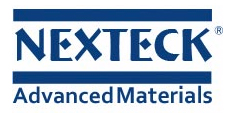Gold is a chemical element with the symbol Au (from the Latin aurum, meaning shining dawn) and atomic number 79. It is a highly sought-after precious metal which, for many centuries, has been used as money, a store of value and in jewelry. The metal occurs as nuggets or grains in rocks, underground "veins" and in alluvial deposits. It is one of the coinage metals. Gold is dense, soft, shiny and the most malleable and ductile of the known metals. Pure gold has a bright yellow color traditionally considered attractive.
Gold formed the basis for the gold standard used before the fiat currency monetary system was employed by the International Monetary Fund (IMF) and the Bank for International Settlements (BIS). It is specifically against IMF regulations to base any currency against gold for all IMF member states. The ISO currency code of gold bullion is XAU.
Modern industrial uses include dentistry and electronics, where gold has traditionally found use because of its good resistance to oxidative corrosion.
Chemically, gold is a trivalent and univalent transition metal. Gold does not react with most chemicals, but is attacked by chlorine, fluorine, aqua regia and cyanide. Gold dissolves in mercury, forming amalgam alloys, but does not react with it. Gold is insoluble in nitric acid, which will dissolve silver and base metals, and this is the basis of the gold refining technique known as "inquartation and parting". Nitric acid has long been used to confirm the presence of gold in items, and this is the origin of the colloquial term "acid test," referring to a gold standard test for genuine value.
| Symbol | Au | Density (20°C)/gcm-3 | 19.32 |
| Atomic number | 79 | Melting point /°C | 1064 |
| No. of naturally occurring isotopes | 1 | Boiling point /°C | 2808 |
| Atomic weight | 196.9665 | ΔHvap/kJmol-1 | 12.8 |
| Electronic configuration | [Xe]4f145d106s4 | ΔHfus/kJmol-1 | 343(+/-U |
| Metal radius (12coordinate)/pm | 144 | ΔHf(monoatomic gas)/kJmol-1 | 379(+/-8) |
| Effective ionic radius)6-coord)/pm V | 57 | Ionization energy/kJmol-1 I | 889.9 |
| Effective ionic radius(6-coord)/pm III | 85 | Ionization energy/kJmol-1 II | 1973.3 |
| Effective ionic radius(6-coord)/pm II | - | Ionization energy/kJmol-1 III | -2895 |
| Effective ionic radius(6-coord)/pm I | 137 | Electrical resistivity | |
| Electronegativity χ | 2.4 | (20°C)/μohm cm | 2.35 |
| Temperature (oC) @Vap. Pressure | Techniques | Remarks | |||||
| 10-8Torr | 10-6Torr | 10-4Torr | Electron Beam | Crucible | Coil | Boat | |
| 807 | 947 | 1132 | Excellent | Al2O3, BN & Vitreous Graphite | Tungsten | Tungsten, Molybdenum coated Al2O3 | Films soft. Not very adherent. |
| Au | ||||
| Sputtering Targets | ||||
| Matierial | Symbol | Atomic Number | Thermal Conductivity | Theoretical Density |
| W/m.K | g/cc | |||
| Gold_Au | Au | 79 | 320 | 19.3 |
| Evaporation Materials | ||||
| Matierial | Symbol | Atomic Number | Thermal Conductivity | Theoretical Density |
| W/m.K | g/cc | |||
| Au ( pellets & pieces ) | Au | 79 | 320 | 19.3 |
Below is the periodic table of chemical elements.The elements in red are the ones Nexteck's product contain. Click them, you will come to the details.

NEXTECK (CHINA) - SHENZHEN
Tower A1001, Galaxy Century, No 3069, CaiTian Rd, Futian District, Shenzhen, China
Zip Code: 518026
Tel: +86-755-8256-1631
Fax:+86-755-8256-1691
E-mail:nexteck@nexteck.com
PRODUCTION PLANT
Wenchuan Rd, Alley 5300/1, Baoshan District, Shanghai, China
Zip Code: 200942
Tel: +86-21-3638-0189
Fax: +86-21-3638-0109
E-mail: nexteck@nexteck.com.cn